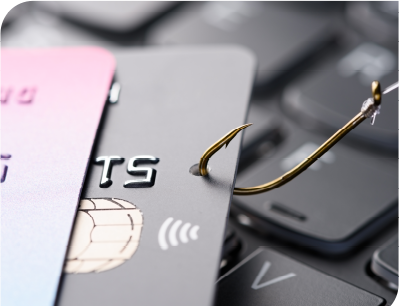Phishing is a fraudulent method in which scammers impersonate an organization or an individual you trust.
Often through emails, texts, or on social networks, criminals seek to lead you to a fake website, sometimes very credible, or to install malware on your own devices.

How to recognize them
- They are unsolicited communications;
- You are asked to take action: clicking on a link, opening a file;
- To prompt you to take this action without too much thought, the communication will claim:
- a problem to solve;
- an urgent action to take;
- a reward to receive.

In any case, always avoid clicking on files or opening links without being certain that they come from a trusted sender.
If you believe you have clicked on a fraudulent link or file:
- Confirm, through a professional, that your device has not been infected by a virus;
- Change all your passwords;
- Monitor sensitive activities, especially banking.
To help protect yourself from this

THINK BEFORE YOU CLICK
Check the exact address of the sender, especially during an unsolicited communication. On a website, verify the official nature of the site, its level of professionalism, the accuracy, and accessibility of the contact information.

STAY INFORMED
Stay informed about frauds circulating in Canada and inform your colleagues, family, and friends.

PROTECT YOUR TOOLS
Install recognized antivirus and firewall software and, most importantly, ensure it stays up to date.

